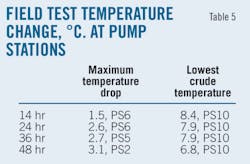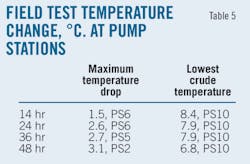Cleaning oil, sand & water
The Macondo oil spill in the Gulf of Mexico is pushing US skimming resources to their limits, and the spill provides a test venue for new cleanup technology. BP PLC, operator of the runaway well, received thousands of ideas from entrepreneurs describing ways to clean up oily water and stained beaches.
This Journally Speaking describes just a few types of technologies that BP is field-testing for separating oil from sand and for separating oil from water.
Oil and sand
Clean Beach Technologies LLC of Houston adapted technology it originally developed for the Alberta oil sands. Its Beach Restoration System (BRS) machine separates oil from sand using water and a biodegradable chemical. BRS machines were used on Pensacola Beach, Fla., and Orange Beach, Ala.
Steven Sommers, CBT principal, has told reporters that it's not surprising tar sands technology can be used to clean oiled beaches. "You have the same problem," Sommers said. "You need to separate a hydrocarbon from the sand."
The process includes lifting oiled sand with a front-end loader, placing it into hoppers on a trailer-mounted BRS, and shearing the oil from sand particles with biodegradable solution. Water is sent under the hoppers through eductors or jet pumps. The CBT system can clean 700 cu yards of sand in 10 hr.
Oil and water
BP also is field-testing technologies to separate oil from water using centrifuge machines installed on vessels. Enviro Voraxial Technologies Inc. of Fort Lauderdale, Fla., offers a continuous flow centrifuge.
The Voraxial recovery method allows the operator to separate oil from water in the ocean. By conducting the separation in the ocean vs. holding tanks, skimming vessels can stay out longer, the company said.
Separately, Ocean Therapy Solutions provided BP with centrifuge units being used in deep water on a vessel equipped with a skimmer. Based on the different densities of water and oil, the units spin an oily-water mixture to separate the two. Ocean Therapy said its machine can process 200,000 gpm of oily water. Ocean Therapy receives financial backing from actor Kevin Costner.
Cleanup ideas in languages from Arabic to Russian continue to pour into BP offices. To process them promptly, BP gets help from the federal Interagency Alternative Technology Assessment Program working group, which includes the National Oceanic and Atmospheric Administration, the US Environmental Protection Agency, the Army Corps of Engineers, the Department of Agriculture, and the Maritime Administration.
Anyone with an idea for BP's Alternative Response Technology team is encouraged to submit it using an online form: www.horizonedocs.com.More Oil & Gas Journal Current Issue Articles
More Oil & Gas Journal Archives Issue Articles
View Oil and Gas Articles on PennEnergy.com

